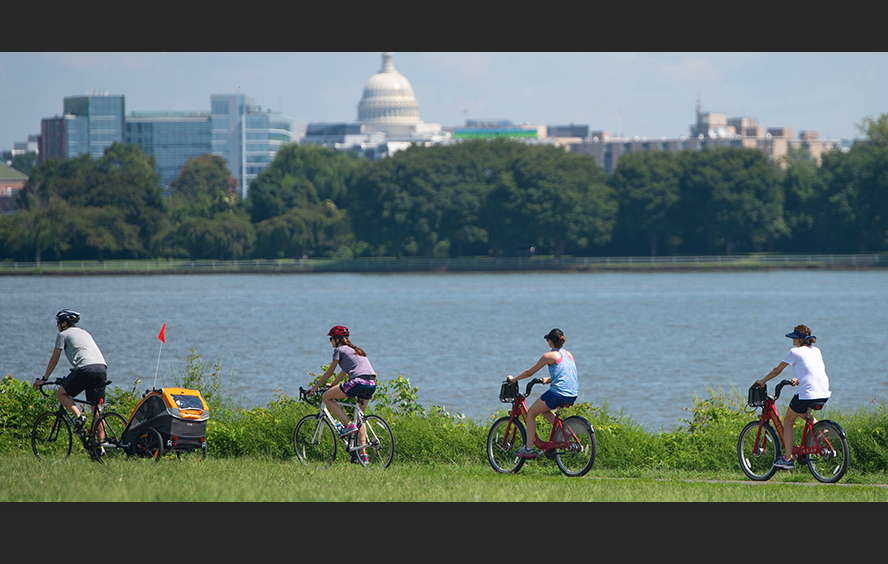Arlington, VA has been named “America’s Fittest City” in the annual American Fitness Index rankings published by the American College of Sports Medicine (ACSM) and the Anthem Foundation, the philanthropic arm of Anthem, Inc.
The ACSM/Anthem Fitness Index evaluated America’s 100 largest cities using 33 health behaviors, chronic diseases and community infrastructure indicators. Seattle, WA; Minneapolis, MN; Madison, WI; San Francisco, CA; Washington, D.C.; Irvine, CA; Denver, CO; Boise, ID; and Boston, MA, round out the top 10 fittest cities. Boston makes its first appearance in the Top 10 this year.
“We are pleased to reinforce our commitment to our local communities and whole-person health and wellness with this year’s Fitness Index report. These annual rankings offer cities meaningful guidance on health habits within their communities and reveal how well those communities encourage healthy lifestyles among their residents,” said Gail K. Boudreaux, president and CEO of Anthem, Inc. “We’re pleased to provide municipalities with the data-rich information and resources they need to address social determinants of health and to motivate action.”
The evolving Fitness Index, now in its 13th year, allows leaders to focus on policy, systems and environmental change strategies that are based on evidence and create sustainability for their communities.
Arlington’s balance of healthy behaviors and community infrastructure earned it the No. 1 overall rank. Arlington, VA ranked in the Top 10 cities for 19 of the 33 indicators in the ACSM/Anthem Fitness Index. Two indicators ranked No. 1, including the lowest rate of adults with obesity and the highest rate of residents meeting aerobic and strength activity guidelines. Arlington has earned the fittest city title three consecutive years. You can compare your city to Arlington or others ranked in the Fitness Index by accessing the online City Comparison Tool.
COVID-19 demonstrates the critical role cities play in ensuring residents have opportunities and infrastructure to lead physically active, healthy lifestyles.
“We know from research that physical activity can build a healthier immune system and overall wellness, which helps minimize harmful effects of illness and disease,” said Barbara Ainsworth, Ph.D., M.P.H., FACSM, chair of the American Fitness Index Advisory Board. “This pandemic shows the need to have local parks, trails and connected sidewalks in all neighborhoods that allow people to exercise safely. City leaders and planners need to act boldly and decisively to enact policies and funding to promote physical activity, better health and stronger communities.”
Ainsworth also noted that societal health challenges existed long before COVID-19, and the Fitness Index has provided the data needed to address them for more than a decade. “It should be of national concern that only one in four Americans meets national physical activity guidelines and more than 30 million have diagnosed heart disease,” she added. “Sedentary lifestyles across the United States cost more than $117 billion annually in sick care services, adversely impacting both our nation’s health and economic well-being. This challenge has local solutions, and the Fitness Index is a prescription for communities to bring about positive change.”
Additional findings from the 2020 Fitness Index rankings include:
- Across all 100 cities, indicators improved for the rate of residents exercising; fewer people smoking; parks within a 10-minute walk; and Bike Score, as compared to 2019;
- Buffalo, N.Y., Toledo, OH, and Anchorage, AK, rankings improved by at least 15 spots from 2019;
- Only 22 percent of adults in the 100 largest cities met the guidelines for both aerobic and strength activities. Adults need 150 minutes per week of moderate-intensity activity, or roughly 22 minutes per day, for substantial health benefits;
- Across all 100 cities, only 4.5 percent of residents walk or bike to work and only 7 percent use public transportation. Boston, MA; Jersey City, NJ; New York, NY; San Francisco, CA; and Washington, D.C., reported the largest percentages;
- Neighborhoods connected by sidewalks, protected bike lanes, lighting, and benches reduce pedestrian fatalities. Safety features can impact how often residents choose to walk or bike. The 10 deadliest cities for pedestrians (4 are in Florida) averaged 5.5 pedestrian deaths per 100 residents, while the 10 safest cities averaged 0.6 fatalities per 100,000 residents; and
- Cities that experience weather extremes made it into the Top 10 — Minneapolis, MN (#3); Madison, WI (#4); and Denver, CO (#8) — showing that local leaders can make it easier for residents to stay physically active year-round.
More comparative data and indicator rankings are available here.















